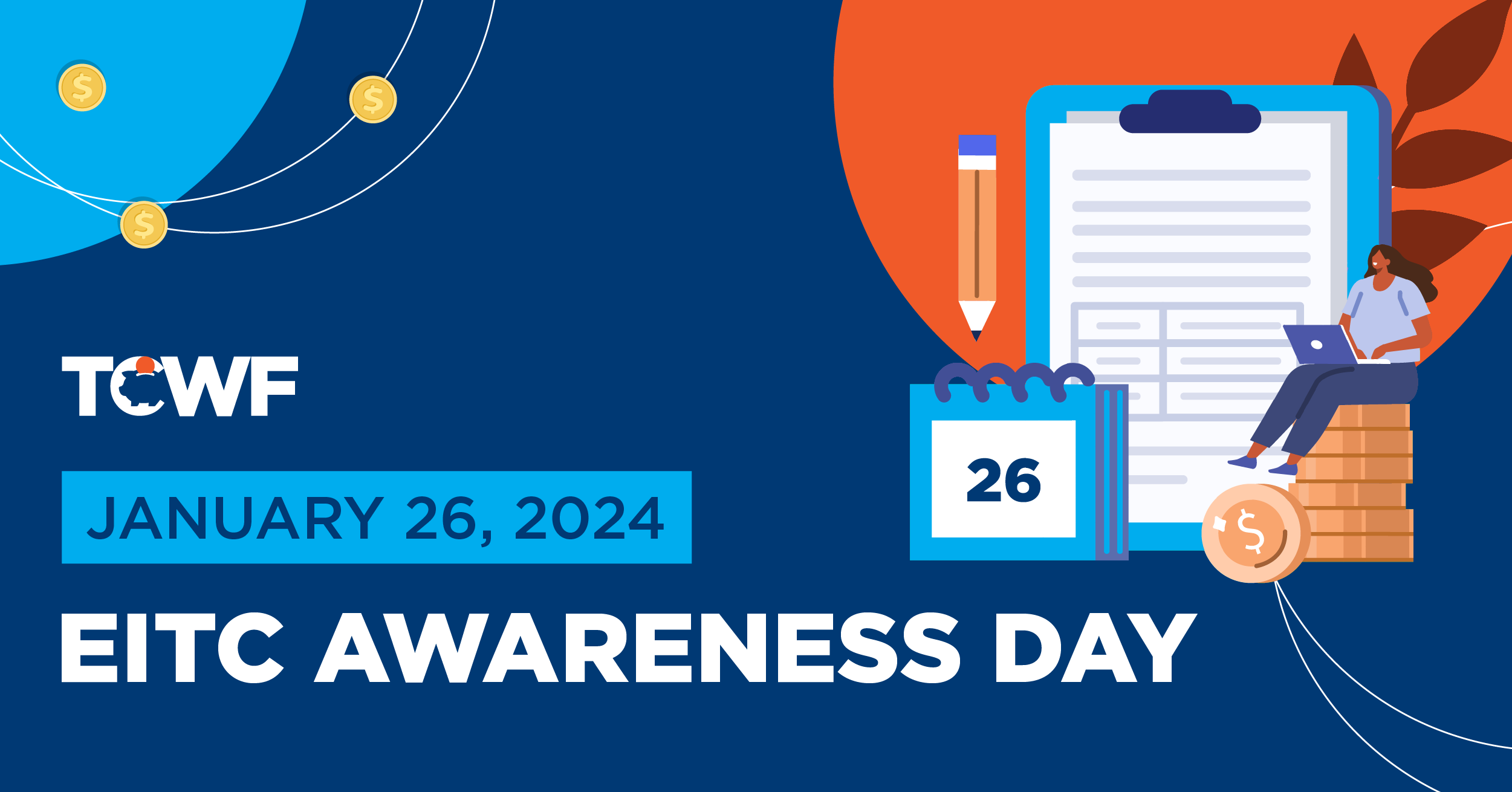Claim What’s Yours: EITC Awareness Day Encourages Filers to Check Tax Credit Eligibility
Abby Ling
Today marks National Earned Income Tax Credit (EITC) Awareness Day. First recognized in 2006, EITC Awareness Day has become an annual campaign led by the Internal Revenue Service (IRS), with tax credit advocates using the day to raise awareness around the anti-poverty program and the resources available to claim it.

In 2023, roughly 23 million workers and families nationwide claimed $57 billion in the tax credit. However, the IRS estimates approximately 20% of all eligible taxpayers never claim it.
Why? Because although several workers may find themselves eligible for the EITC, as eligibility thresholds change each year, they might not know it.
This annual fluctuation, when gone unnoticed, can create confusion among recently eligible filers who may not have previously qualified for the EITC. This lack of awareness, along with general uncertainty about the filing process or low-income households falling below the income threshold required to file a federal income tax return, can further prevent people from claiming the EITC. Some of the most common non-participants include those who are:
- Living in rural areas
- Self-employed
- Receiving certain disability pensions or have children with disabilities
- Without a qualifying child
- Not proficient in English
- Grandparents raising their grandchildren
- Experiencing recent changes in marital, parental, employment, and financial status
Low- and middle-income workers and families have earned a much-deserved tax break that can provide them financial relief to care for themselves and their loved ones, but they risk losing out on it due to preventable obstacles. How can we close this divide and ensure that folks eligible for the EITC can claim it? It starts with awareness.
Here are just a few ways to advocate for the EITC this tax season:
- Spotlight eligibility requirements – To increase the number of filers who can claim the EITC, it’s essential they have the resources to understand its benefits and whether or not they’re eligible for it. The IRS offers a free-to-use EITC Assistant that’s available in multiple languages, and helps filers see if they are eligible to claim the federal tax credit. Several states, including Maryland and New York, also provide local filing assistance and services to low-income households through programs such as Volunteer Income Tax Assistance (VITA). Use this day to further elevate your state’s assistance programs to help taxpayers claim local tax credits.
- Advocate for increased access to federal and state EITCs – Currently, only filers with a Social Security Number (SSN) can claim the federal EITC, leaving out millions of households who file with an Individual Taxpayer Identification Number (ITIN). Immigrant workers and families are our most notable ITIN filers and have played a vital role in contributing to the growth of our nation’s economy but are continuously left out of reaping its benefits. This also impacts children who have SSNs with parents who file with ITIN. States are beginning to address this disparity by expanding local tax credits to ITIN filers. As of October 2023, 11 states, including the District of Columbia, have made their state EITCs more inclusive by expanding eligibility to taxpayers who file with ITIN.
- Raise awareness about ongoing tax credit legislation – Federal and state EITCs are changing constantly. Whether it’s an expansion, enactment, or reduction, there is ongoing legislation that impacts a tax credit’s reach, benefits, and longevity. It’s as imperative to keep filers aware of what’s at stake as it is to raise awareness towards claiming the credit. In the past year, 14 states expanded or enacted their local tax credits. This year, more are aiming to do the same in the beginning weeks of their legislative sessions. It’s essential to keep filers aware of how they could be impacted by changes made to the EITC at the federal and local levels.
“[The EITC] is an extremely important tax credit that helps millions of hard-working people every year,” said IRS Acting Commissioner Doug O’Donnell. “But each year, many people miss out on the credit because they don’t know about it or don’t realize they’re eligible.”
Thirty-two states, including the District of Columbia, offer a state-level EITC. When paired with the federal tax credit, workers and families with children can receive thousands of dollars back to put toward rent, groceries, childcare, or rainy-day savings. The tax credit’s refundability can also help support new entrepreneurial endeavors and educational opportunities or serve as a critical lifeline by providing folks with the economic means to escape a dangerous environment and start anew. However, claiming the tax credit begins with awareness.
The EITC is billions of dollars that reduces poverty, improves youth academic outcomes, and promotes employment. Several states acknowledge these benefits and have passed local legislation to improve their tax credits to promote economic and racial equity and make a fairer tax system for all. We – as policymakers, community organizations, advocacy groups, and everyday supporters – must continue to build momentum to strengthen federal and state EITCs, raise awareness around the significance of tax credits, and encourage all folks to check their tax credit eligibility and take advantage of its valuable benefits this year and beyond.
To learn more, check out https://www.eitc.irs.gov/ for additional tools and information regarding the federal EITC.
To keep up to date with ongoing news surrounding federal and state tax credits, subscribe to our newsletter at www.taxcreditsforworkersandfamilies.org.

